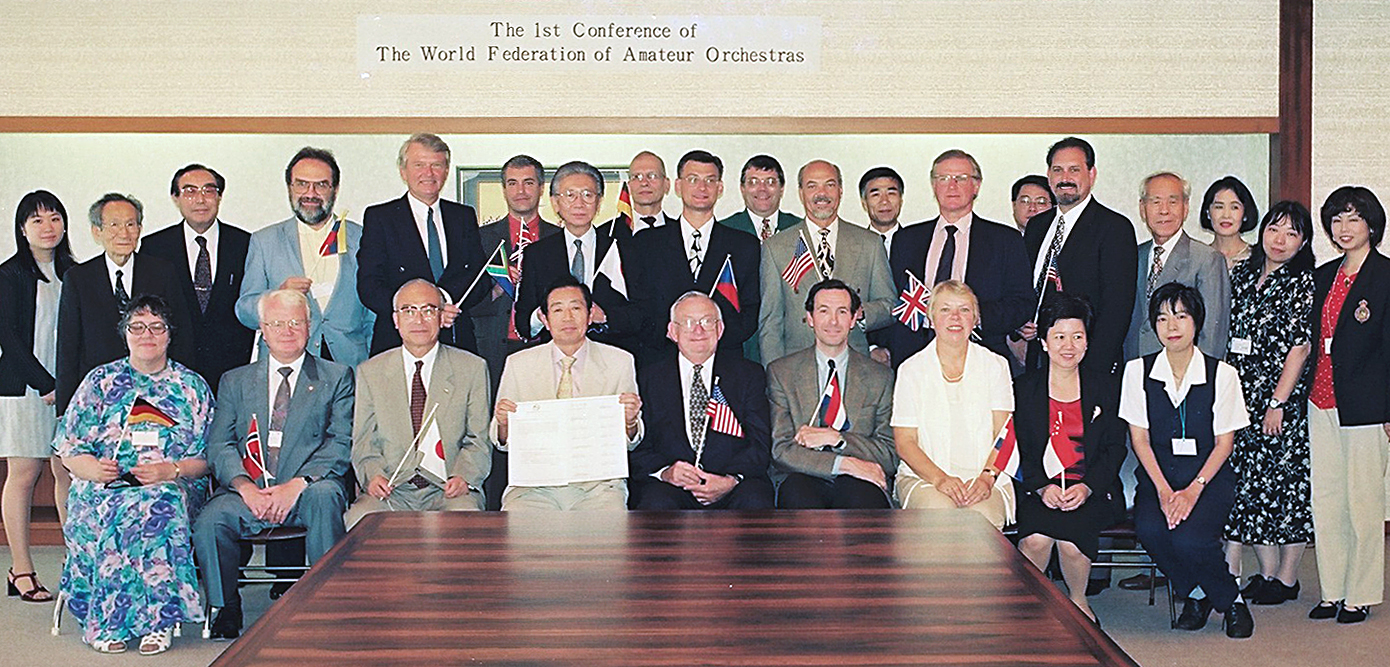<Chapter 9> Activities of International Exchanges (2)
“The fact that the shape of the Earth is sphere also suggests us how human beings should be connected.”

We, Japanese people tend to make small groups with people whom we are familiar with; meeting leaders and friends with devotion to an orchestra in the world by overcoming the psychological isolation will provide us with greater experiences and lessons than any book can offer.
The world is growing smaller every moment and time or distance will not divide us in such a world. We must keep in our minds that such distance will forever be apart unless we have love and respect towards others.
Not only from the astronomical and geographical aspect, but the fact that the shape of the Earth is sphere also suggests us how to human beings should be connected.
(August 1993)
The culture, history, and traditions of each country are uniquely different and therefore will not fit in any uniform frame. Conversely, this is why such exchanges are meaningful.
So many countries, so many common sense, and what fulfill the gap between the reality and the global scale activities are the young people and enthusiasm of music.
In any country, the depth of youth activity that emerges from the authentic cultural nature is not just about competing techniques and the number of activities; rather, it exists in the unique traditional and cultural aspect in its horizontal axis and impulsion and passion to express music in its vertical axis.
Therefore, cultural activities such as youth orchestras must be a permanent existence rather than an extraordinary one for the country. From this perspective, an orchestra organized by fine musician passing auditions has a value to a certain extent, but it is just one of the forms of orchestras; there is no way to audition the level of longing and passion for music. Our main target is not genius boys and girls, but we shall look for ordinary children who will one day become cultural denominator of the country in the future.
(August 1993)

WFAO Meeting in Venezuela (2000) with Dr. Abreu

WFAO Meeting in Venezuela (2000) with Maestro Dudamel as a young man
Various countries and ethnicities have different temperaments and sensibilities towards music, but orchestra serves as a common coordinate in international exchanges, enabling us to be aware of our music abilities and directions. The function of an orchestra is precisely to unite a great number of people in the pursuit of a common effort and a common goal. 100 people or sometimes 200 people perform music together; there even exists music called “Symphony of a Thousand.” What I find notable about music is that there is no substitute player in the orchestra, unlike competitive sports. In addition, there are no language barriers. The greatness of Beethoven’s Symphony No.5 remains the same wherever this is performed on the earth. There is no such thing as South American, American, European, or German “Symphony No.5.” The interpretation of music calls for the highest level of cooperation and insights of all performers.
Moreover, classical music we hear today has survived rough seas of history and we must say they are valuable cultural heritage. In fact, they provide us with some kind of hints on how to live well as better human beings. Such global commonality behind orchestra enables the existence of a world organization like WFAO.
(June 2007)





